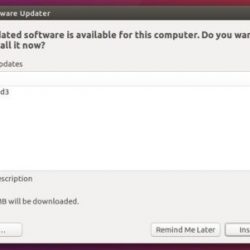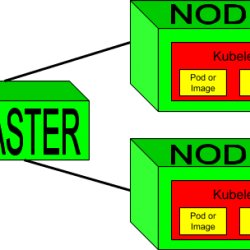ifconfig 命令 用于在 GNU/Linux 系统中配置网络接口。 它显示网络接口卡的详细信息,如 IP 地址、MAC 地址和网络接口卡的状态等。但是,此命令已过时,在 RHEL 7 及其克隆版本(如 CentOS 7)的最小版本中找不到、Oracle Linux 7 和 Scientific Linux 7。
在本教程中,我们将向您展示如何在 centos 7 上安装 ifconfig。默认情况下,在全新安装的 centos 7 中将找不到 ifconfig 命令,因此我们需要先安装软件包才能使用 ifconfig 命令。
本文假设您至少有 linux 的基本知识,知道如何使用 shell、root 用户或非 root 用户帐户 sudo 在您的服务器上设置的权限。
如何在 CentOS 7 最小服务器中启用和使用“ifconfig”命令?
如果您不知道在哪里可以找到 ifconfig 命令,请按照下面提供的简单步骤操作。 首先让我们找出哪些包将提供 ifconfig 命令。 为此,请输入以下命令:
# yum provides */ifconfig Loaded plugins: fastestmirror Loading mirror speeds from cached hostfile * base: centos.t-2.net * extras: centos.t-2.net * updates: centos.t-2.net net-tools-2.0-0.24.20131004git.el7.x86_64 : Basic networking tools Repo : base Matched from: Filename : /sbin/ifconfig
正如您在上面的输出中看到的,net-tools 包提供了 ifconfig 命令。 所以,让我们安装 net-tools 包来使用 ifconfig 命令。
# sudo yum instll net-tools -y
现在,您将能够像往常一样使用 ifconfig 命令。
[[email protected] ~]# ifconfig enp0s3: flags=4163<UP,BROADCAST,RUNNING,MULTICAST> mtu 1500 inet 192.168.100.5 netmask 255.255.255.0 broadcast 192.168.100.255 inet6 fe80::72fa:5672:4f5d:ea72 prefixlen 64 scopeid 0x20 ether 08:27:72:da:42:65 txqueuelen 1000 (Ethernet) RX packets 13534 bytes 18672794 (17.8 MiB) RX errors 0 dropped 0 overruns 0 frame 0 TX packets 2882 bytes 221122 (215.9 KiB) TX errors 0 dropped 0 overruns 0 carrier 0 collisions 0 lo: flags=73<UP,LOOPBACK,RUNNING> mtu 65536 inet 127.0.0.1 netmask 255.0.0.0 inet6 ::1 prefixlen 128 scopeid 0x10 loop txqueuelen 1000 (Local Loopback) RX packets 132 bytes 11664 (11.3 KiB) RX errors 0 dropped 0 overruns 0 frame 0 TX packets 132 bytes 11664 (11.3 KiB) TX errors 0 dropped 0 overruns 0 carrier 0 collisions 0
就这样。 您现在可以在 CentOS 7 机器上使用 ifconfig 命令。
如何在 CentOS 7 上配置静态 IP 地址
RHEL/CentOS 7 最小安装后如何设置网络



















